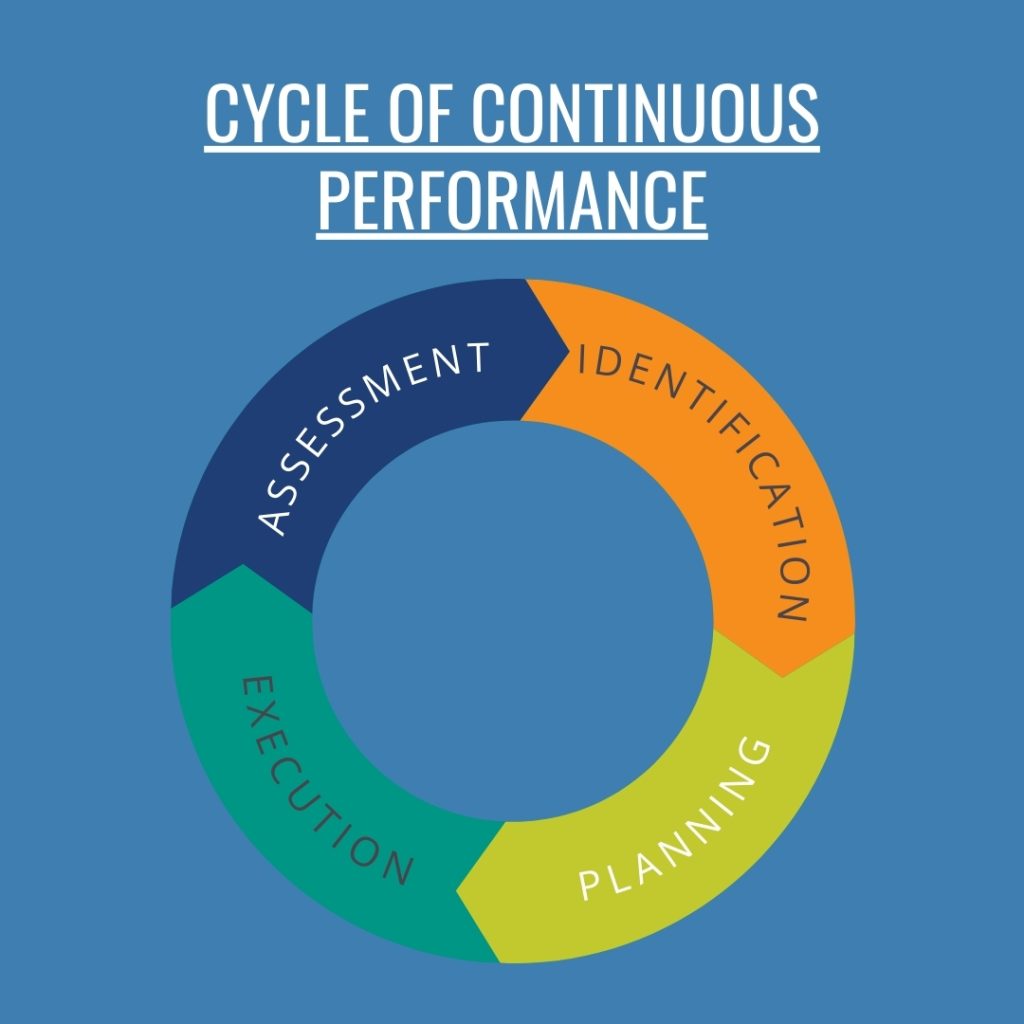Success in the coming year will look different for every individual.
For some, success might look like effectively harnessing opportunities to make a substantial improvement in one’s life. For others, life improvement may be solving difficult problems or enduring tough emotional challenges. For most, it will be a mixture of both. Regardless, planning will help.
The below guidance can help you set a plan for success in the new year. Identify goals, objectives, and behavioral enhancements that build upon past successes and address areas of concern.
Commit to a Cycle of Continuous Performance
Continually use the cycle of:

- Goal Identification: The determination of performance goals and objectives and targeted behavioral changes; to see and select potential opportunities to embrace and challenges to meet.
- Action Planning: The formulation of steps to be taken to meet targeted levels of performance.
- Action Execution: The conduct of planned steps and/or the demonstration of targeted behaviors.
- Performance Assessment: A full and thorough review of the extent of actions taken or behaviors changed and the performance impact of having done so. An examination of the underlying reasons for performance successes or failures. Such assessment is the basis for the next cycle of continuous performance improvement.
By doing so you can raise the probability of building the life you desire.
You can start the goal identification and action planning phases of your Cycle of Continuous Performance Improvement with this planning template.
Adopt a Positive Mindset
What you believe about yourself, others, and the world impacts your potential for success or failure. Adopt a positive mindset that promotes personal growth and embraces the active pursuit of personal goals and objectives and the development of more constructive habits. The approach to such growth should commit to continuous learning, hard work, and a willingness to capitalize on personal mistakes and confront deficiencies.
Write it Down!
It’s hard to beat a man with a plan. Harder yet to beat a man with a written plan. The mental blackboard in your head is a fickle partner. Avoid the pitfalls of mental ambiguity and faulty memory by writing it down. Describe your goals and plans on paper or in an electronic file. Doing so will allow you to more clearly articulate your desires during the formulation phase of goal development and more easily refer back during the action execution phase.
Plan Some Quick and Early Wins
In your plan, build goals and objectives that can be achieved quickly and without extraordinary effort. Early successes (and periodic ones across the year) can fuel continued effort toward your goals and objectives.
Note: Consider breaking up large goals and substantial objectives into pieces. Schedule these pieces as interim steps that can be achieved over defined intervals, thus accomplishing a similarly satisfying quick-win effect.
Print It/Post It
Save your plan electronically in a spot on your computer, tablet, or phone for ready access. Print out a copy and post it prominently in your daily environment. By so doing, you allow your plan to remind, inspire, taunt, and tease you to higher levels of performance.
Note: Carefully consider the level of privacy your plan requires and adjust your postings as necessary to maintain confidentiality where required.
Establish a Plan for Performance Tracking
It’s easy to convince yourself that you are progressing to plan if there is no data upon which to refer. Create a tracking sheet to capture appropriate performance data and monitor trends.
Review for Goals and Objectives Regularly
We recommend that you read your plan weekly, review the progress made at least monthly, and schedule a thorough performance assessment with yourself (and others, possibly) quarterly to include at year’s end.
Looking for more insights on how to plan for the new year? Subscribe to our LBLY newsletter below!
Header Image Copyright: lightfieldstudios

